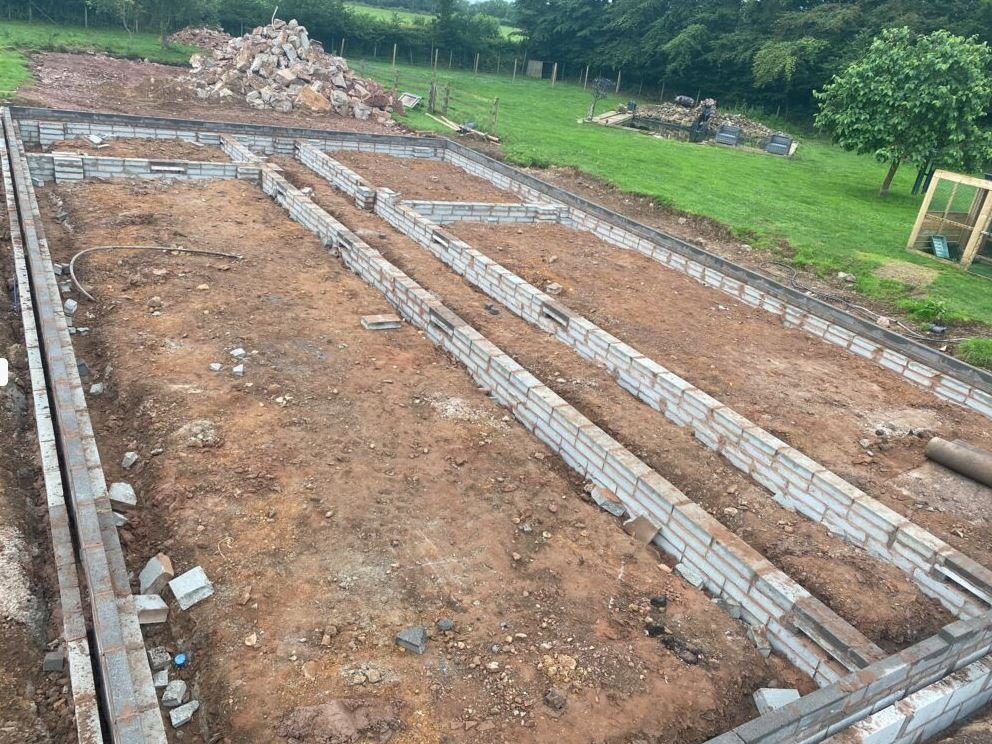What are the different types of Building Foundations and their uses?
May 5, 2025

Building a foundation is the most essential part of any building. Hence, a stronger foundation ensures longevity of the building and protects it from any ground settlement and other factors. Besides, it helps to carry the load of the superstructure efficiently. But how do you know which type of foundation is right for your building? In this blog, we will discuss building foundations and why they are important to building construction.
Why the Right Foundation Matters
Imagine you are planning to build a commercial building in a rocky area. Naturally, the soil will be uneven and lack the proper strength to carry the load of the building. But if you go for a piled foundation, the building will have a solid base structure to carry the loads. You don’t need to worry about ground settlement or soil displacement-related issues for the commercial building. The reason is a strong foundation, where concrete piles are deeply rooted in a stronger soil layer. However, a raft foundation may not be the right or strong type for commercial buildings. As it has a low load-carrying capacity, a heavy building load cannot be carried by it. So, always consult your contractor for the right building foundation. Now, let’s see what types of building foundations you can choose for your building.
Main Types of Building Foundations
The type of foundation that will suit your building depends on the structure and the soil type. The shallow foundation may be ideal for a small building with solid ground conditions; however, raft foundations may be suitable for weak soil conditions.
Shallow Foundations
The foundation type is also often referred to as footings. You can understand from the name that this type of structure is suitable for small homes on strong soil types. Besides, you have to ensure that the soil will not settle under the pressure of the building. Let’s see the different types of shallow foundations.
Strip Foundations
One of the types of shallow foundations, strip foundations, is suitable for strong soil conditions. It offers continuous foundation support to the structure. This type of foundation is most suitable for small homes and houses that do not put an extreme load on the foundation. You must not consider such a foundation for a commercial building (as they tend to be larger and house heavy materials); instead, go for small-scale residential buildings.
Raft Foundations
This foundation is beneficial for commercial or residential building structures where the soil is weak. A single, large concrete slab forms the foundation of the building. So, the building weight is spread across the slab, reducing settlement risk. This type of foundation is common for basements and commercial structures. Sometimes, to strengthen the foundation, a raft foundation is further supported by piles underneath. Then it becomes a piled raft foundation.
Deep Foundations
When the topsoil is not strong enough to carry the building load, contractors go for a deep foundation. It is much stronger than a shallow foundation. Let's discuss some types of shallow foundations.
Pile Foundations
This type of foundation is most useful for high-rise buildings, where the foundation needs to carry heavy building loads. Concrete piles are driven into the ground to a stronger soil layer, so that the piles can carry the loads of the building. If the site for your future building construction is weak or remains under water, a pile foundation is the right option.
Caisson Foundations
This type of foundation is most common in constructing a building foundation underneath water. You build prefabricated boxes or cylinders for a caisson foundation and then sink them into the water to cast concrete. The hollow structure does not let water enter it and allows the concrete to solidify. You will find these in constructing bridges or any concrete structure on water.
How to Choose the Right Foundation
Before you decide on the building foundation, survey the construction site. Analyse the soil type and its condition. Next, consider the building structure and determine how well the soil can carry the building load. Based on these factors, decide on a suitable building foundation. For weak soil, you have options of a piled foundation. If the soil is strong, you can go with a raft foundation.
Conclusion
In a nutshell, a building's foundation is everything. It distributes the load of the building to the soil. If the soil is weak, you can go for a piled foundation, where concrete piles transfer building loads to a stronger soil type deep into the ground. Contact us for any groundwork for your construction. Our years of expertise in concrete foundations will ensure a flawless building foundation for you.